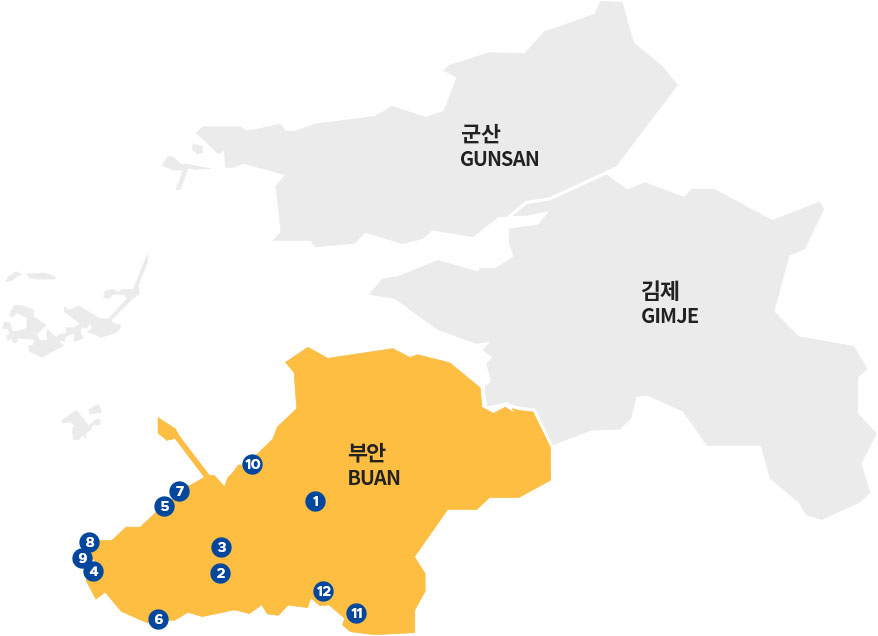Tourist Attractions in Buan
The information below is from the Buan Culture & Tourism website. For more information, please visit the website.
-
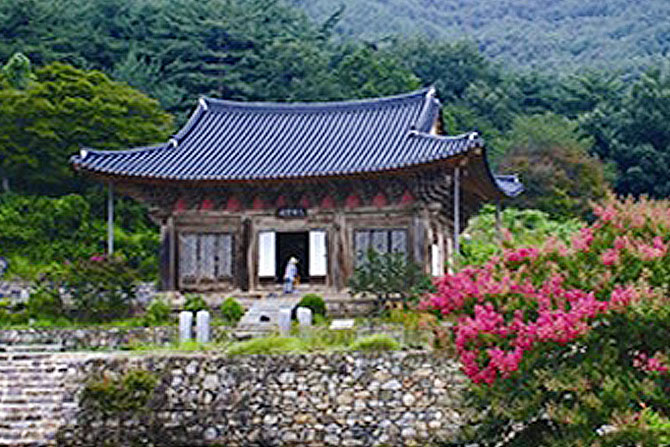
Gaeamsa Temple
Founded in 634 (35th year of King Mu, Baekje) by a great Buddhist monk named Myoryeon, Gaeamsa Temple is a cultural property designated as Treasure No. 292. Standing tall behind its Daeungjeon Hall is Ugeumbawi Rock, which is believed to have been a watchtower of Juryu Castle that was the center of the Baekje revival movement. Under Ugeumbawi Rock are the Bokshin Cave where General Bokshin stayed during the revival movement, the Loom Cave where soldiers wove clothes, and Wonhyo Cave where Wonhyo Daesa practiced asceticism.
- Address
- #248 Gaeam-ro, Sangseo-myeon, Buan-gun (714, Gamgyo-ri)
- Inquiries
- 82-63-583-3871
-
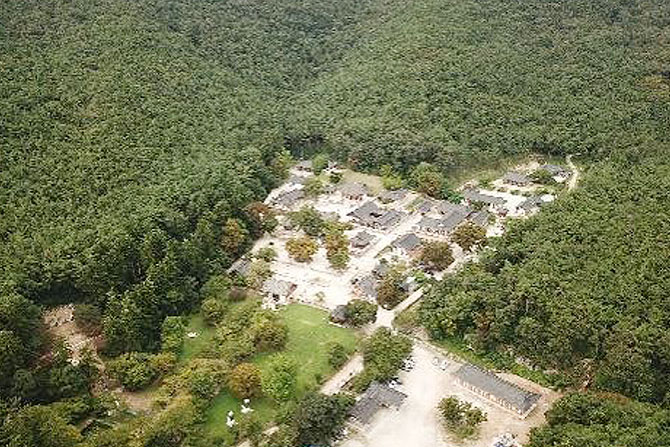
Naesosa Temple
Naesosa Temple was founded by Hyeguduta in 633 (34th year of King Mu, Baekje). Its 600-meter fir tree trail from Iljumun to Cheonwangmun is selected as one of the 100 beautiful roads in Korea. The forest trail is the temple’s first tour course that gives you the refreshment that only nature therapy can deliver. Daewoongbojeon Hall designated as Treasure No. 291 retains the elegance and serenity of a thousand-year old temple.
The temples arranged against Gwaneumbong Peak look natural and harmonious, not only providing comfort but also serving as one of the best places for prayer and asceticism.
This temple is famed for its unrivaled beauty intensified by splendid cherry blossoms in spring, fresh fir trees in summer, autumn leaves, and snow scenery in winter along with an array of legends.- Address
- #243 Naesosa-ro, Buan-gun (Seokpo-ri)
- General inquiries
- 82-63-583-7281
- Temple stay inquiries
- 82-63-583-3035
- Admission inquiries
- 82-63-582-7570
- Parking inquiries
- 82-63-582-7808
-
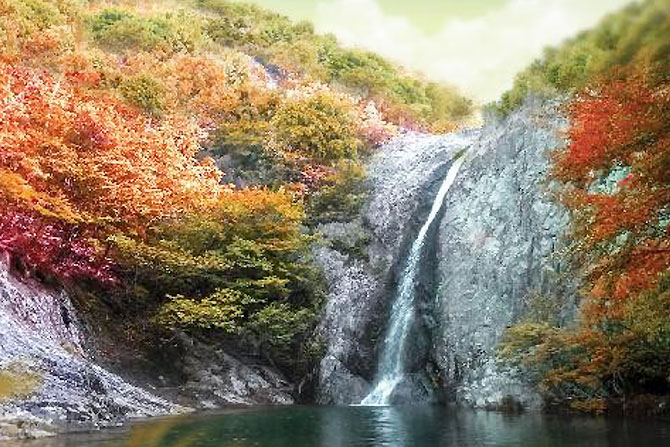
Jikso Falls
Jikso Falls is the second most famous place among the Eight Scenic Views of Byeonsan. The best part is the powerful stream of water pouring out from a height of 30m.
Located in the center of Naebyeonsan Mountain, Jikso Falls has been recognized as one of the three most outstanding features of Byeonsan in addition to Yi Maechang – a famed kisaeng and poet during the Joseon Dynasty – and Choneun Yu Hee-gyeong, another great poet during the Dynasty.
People have said, "Don’t talk about Byeonsan without seeing the Jikso Falls along with the Junggye Valley."- Address
- #52 Silsang-gil, Byeonsan-myeon, Buan-gun (Junggyeri-san 95-10)
- Naebyeonsan Visitor Center
- 82-63-584-7807
-
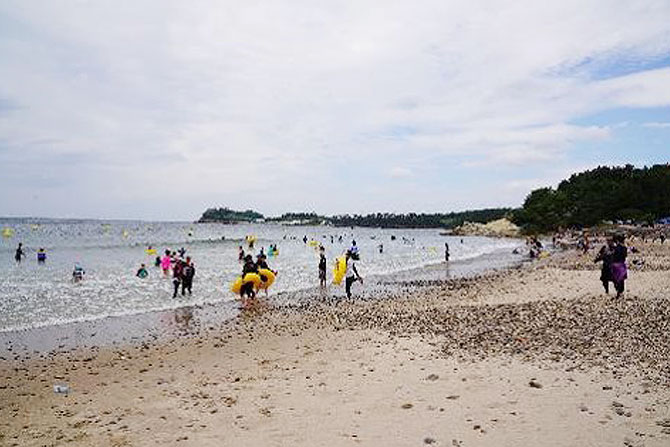
Gyeokpo Beach
Gyeokpo Beach is also called 'Chaeseokgang Beach' as it includes Chaeseokgang Cliffs.
Visitors come throughout the year to see Chaeseokgang Cliffs and sunsets on the west coast. In summer, the beach is more popular as visitors can enjoy the surrounding scenery while bathing and trying out summer sports at the beach.The white sandy beach is about 500m long. The ebb and flow are not rapid here. The water is clear and the slope is gentle. The shallow water tames waves. All these make the beach ideal for family swimmers. The pine forest behind the white sandy beach is lush and cozy, making plenty of shade in summer so that swimmers and visitors alike can take a rest enjoying the beauty of the sea.
- Address
- Byeonsanhaeebyeon-ro 1, Byeonsan-myeon, Buan-gun, Jeollabuk-do
- Inquiries
- 82-63-582-7808
-
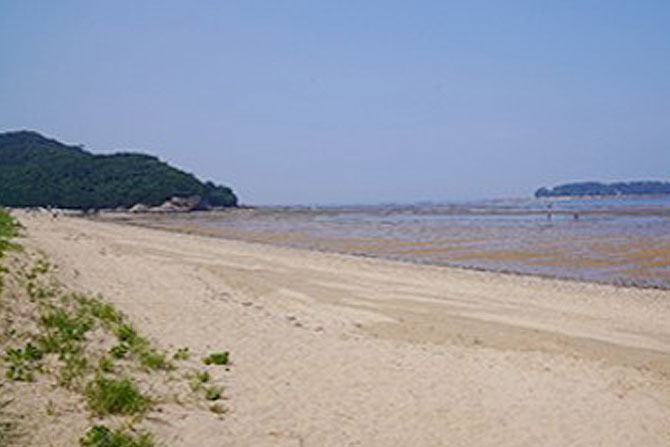
Gosapo Beach
Gosapo Beach boasts the longest sandy beach in Byeonsanbando National Park. The 2km-long white sandy beach is popular with family swimmers because the sand is soft and clean water keeps an ideal temperature for swimming at sea.
The beach has a pine forest that acts as a windbreak along the beach. The sound of wind whispering through pine trees combined with relaxing sounds of waves is quite impressive. The water is clearer than other beaches in the West Sea. The sand is known for its fine and soft quality. The 2km-long white sandy beach boasts soft sand and clean water. Combined with water temperature appropriate for swimming, the beach is particularly popular with family vacationers in summers. Behind the beach is a pine forest providing enough shade for plenty of swimmers who need to take a rest after bathing in the sea.
- Address
- #8-8 Norumok-gil, Byeonsan-myeon, Buan-gun, Jeonbuk
- Inquiries
- 82-63-582-7808
-
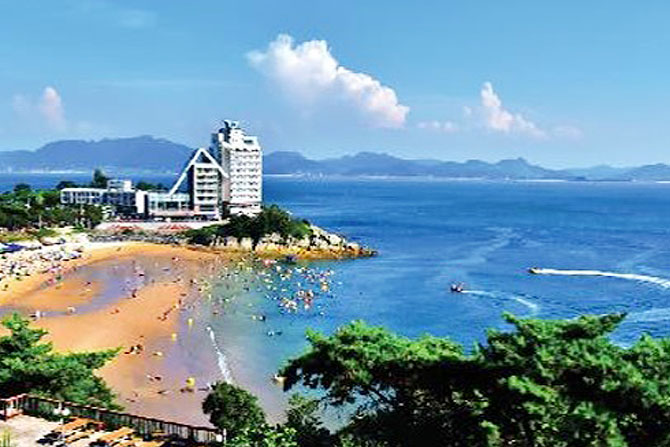
Mohang Beach
Situated on the southern side of the Byeonsan Peninsula, Mohang Beach is shaped like a small bay. The beach is not so big as other beaches on the peninsula. It is thus popular with those who favor the atmosphere that only a smaller, quieter beach can provide.
Mohang has a trail course where visitors can keep walking watching the sunset on the west coast. There is a tidal flat experience site nearby, another reason that this beach attracts family visitors who want to enjoy both bathing in the sea and a tidal flat experience program on land.
- Address
- #23-1 Mohang-gil, Byeonsan-myeon, Buan-gun, Jeonbuk
- Inquiries
- 82-63-580-4739
-
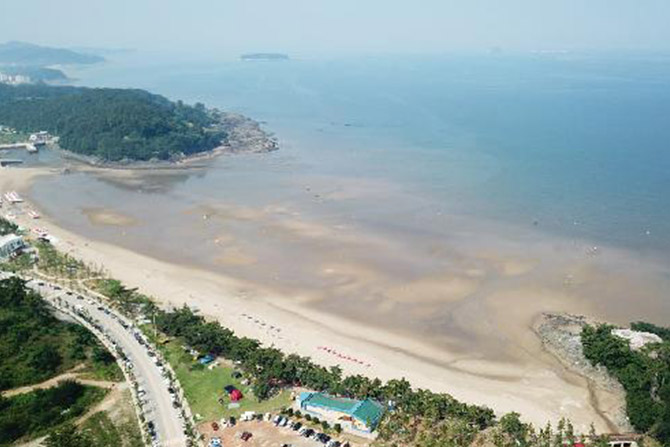
Byeonsan Beach
Byeonsan Beach the iconic beach on the west coast. It is also called 'Baeksa Cheongsong' for its combination of white sand (baeksa) and green pines (cheongsong). Launched in 1933, it is the country’s oldest beach. It boasts fine sand on a long beach. The water is clear for a beach on the west coast. The average water depth is only 1m. The water temperature is warm. The beach is endowed with a number conditions required of a beach favored by people over a long period of time.
- Address
- 2076 Byeonsan-ro, Byeonsan-myeon, Buan-gun, Jeonbuk
- Inquiries
- 82-63-580-4738
-
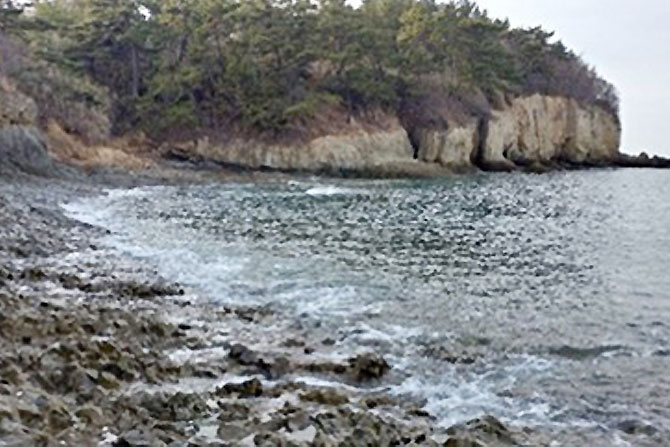
Jeokbyeokgang Cliffs
Recognized as a superb view of Byeonsan Beach, Jeokbyeokgang Cliffs is composed of red-colored rocks and cliffs which are reflected vividly on the water especially at sunset, creating one of the most spectacular views along the west coast.
North of Chaeseokgang Cliffs along the white sandy beach is Jeokbyeokgang Cliffs made of red rock walls. Located at the western end of the Byeonsan Peninsula, the rock wall by the sea boasts a peculiar shape of peperite made of rhyolite over the dark shale layer. The scene of waves hitting this rocky beach has a charm that make viewers feel relieved at heart.
- Address
- #35-28 Gyeokpo-ri, Byeonsan-myeon, Buan-gun, Jeollabuk-do
- Inquiries
- 82-63-582-7808
-
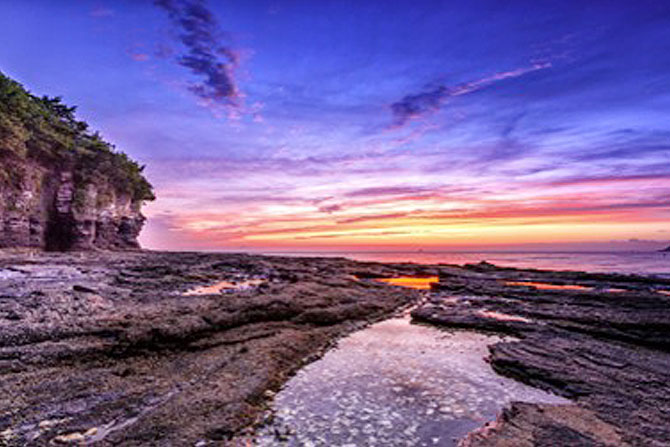
Chaeseokgang Cliffs
Chaeseokgang Cliffs, exposed at low tide, refers to all the stratified cliffs between Gyeokpo Port at the western end of the Byeonsan Peninsula and Mt. Dagibong (200m) on its right side.
The sedimentary rock cliffs formed with a stack of strange rock formations look like tens of thousands of books piled on one another. It was named Chaeseokgang after a place in China that looked similar. The sedimentary rock layer formed by the waves around Dagibong Peak for ages is particularly superb, looking like the soles of an aging mother elephant.- Address
- #1 Byeonsanhaebyeon-ro, Byeonsan-man, Buan-gun, Jeonbuk
- Inquiries
- 82-63-582-7808
-
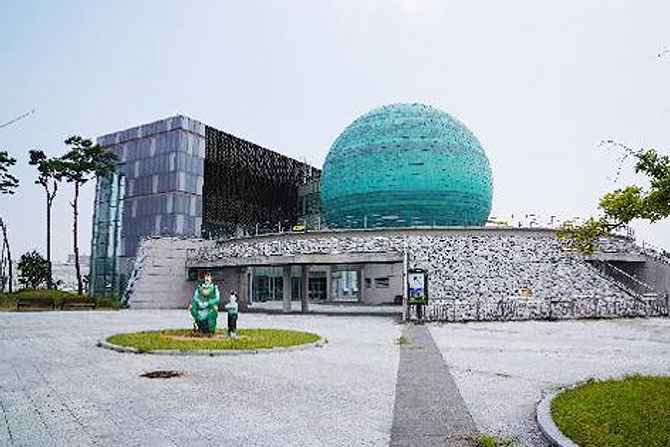
New & Renewable Energy village
The New Renewable Energy Village serves as a hub for growth engines in Jeollabuk-do by fostering regional strategic industries, establishing nine major cluster strategies, and promoting relevant projects, and supporting companies and attracting businesses from outside.
1. Theme Experience Complex: A 4D video theater, a hands-on experience and public relations center, and a tourism hub in connection with Saemangeum
2. Empirical Research Complex: Home to four national research institutes, production of empirical research results, utilization of equipment, and on-site training for businesses, among others
3. Industrial Complex: Fostering the new and renewable energy industries in connection with the Empirical Research Complex- Address
- #10 Sinjaesaeng Energy-ro, Haseo-myeon, Buan-gun, Jeollabuk-do
- Inquiries
- 82-63-580-1400
-
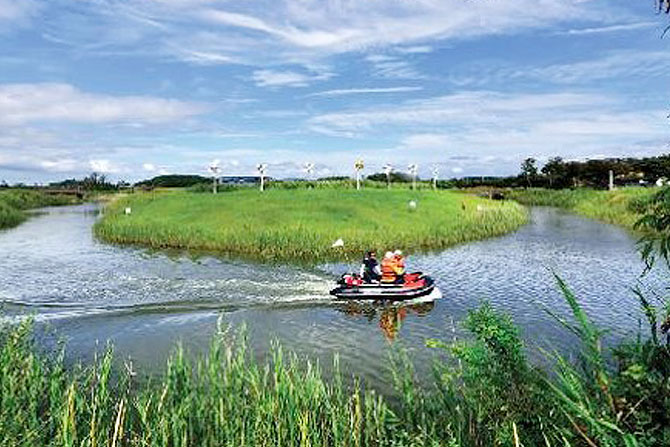
Julpo Bay Tidal Flat Ecological Park
Located at the southern end of Buan, Julpo Natural Ecological Park is a quiet place ideal for taking a walk throughout the year. It is also a popular tourist destination for couples and families as well as professional photographers who want to take pictures of the mudflats and the ecological park. It is good for a one-day walk or a picnic. It is gaining in popularity as a camping site, too.
Located in Upo-ri, Julpo Natural Ecological Park began to serve as a park with the construction of a levee designed to prevent the flooding of lowlands in the area. Since the completion of the embankment 15 years ago, the area has developed into freshwater wetlands with lush reeds and grasses. Reeds in the vast park of more than 660,000 square meters make a spectacular view. The sunset through the reeds in autumn creates the best view emerging as one more attraction that Buan has to offer.
- Address
- #38 Saengtaegongwon-ro, Julpo-myeon, Buan-gun, Jeonbuk
- Inquiries
- 82-63-580-3171~8
-
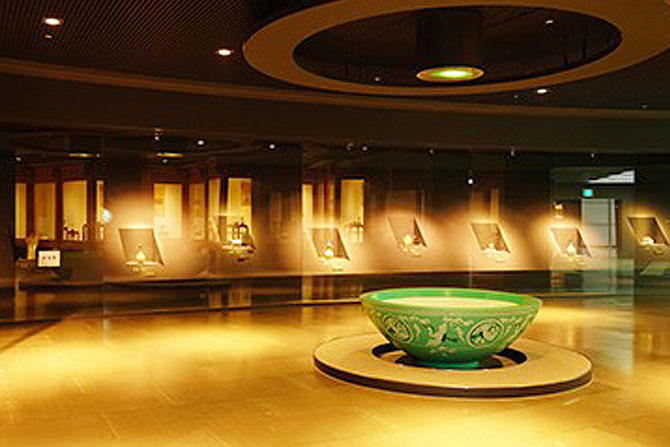
Celadon Museum
A thousand-year-old secret! Witness the beauty of Goryeo celadon in Yucheon-ri, Buan-eup, the mecca of celadon production in the middle of Goryeo (918-1320) and learn about the hidden history of ceramic-making in Buan.
About 30 minutes by car from Gyeokpo, you can see the Buan Celadon Museum on the left of the street in a quiet village. Built in the shape of a jade-colored teacup, the museum opened its doors in April 2011. Although many do not know, Buan was the mecca of celadon production in the middle of Goryeo along with Gangjin, Jeollanam-do. Buan therefore takes a significant important position in the study of the Korean ceramic history.
- Address
- #1493, Cheong-ro, Boan-myeon, Buan-gun, Jeollabuk-do
- Inquiries
- 82-63-580-3964
Visit the Buan Culture & Tourism Website and find more tourist information about Buan, a natural treasure.
